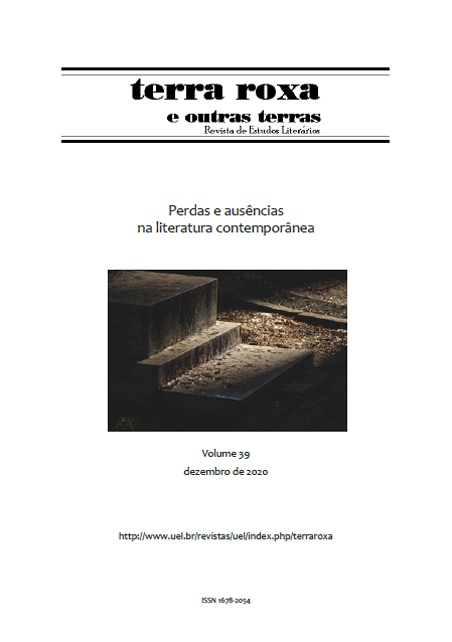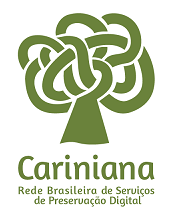An analysis about the illustrations and the theme of death in Harvey: how i became invisible
DOI:
https://doi.org/10.5433/1678-2054.2020v39p115Keywords:
Death, Illustration, Children’s literatureAbstract
Death is present in children’s literary texts, and although it is still considered a taboo for many, the number of works that use it as the central axis of the narrative has grown through the years, as well as, the number of illustrated books and the well-known picture books grow. On book pages, death takes on many faces, and in children’s literature, this is not different. In this relationship between text and image, this work emerged. Thus, we will analyze how illustrations collaborate to the construction of death’s representation in the book Harvey: How I Became Invisible written by Hervé Bouchard and Janice Nadeau (2012), emphasizing not just the very representation of death created from the narrative, but especially how images act both in the construction of texts and in the unfolding of their senses. Thus, we use as a theoretical contribution some renowned authors both in the context of children’s literature, as well as the theme of death and illustration. Among them, we list Oliveira (2008), Abramovich (2008), Ramos and Nunes (2013), Paiva (2011), Lotterman (2009), and Aguiar (2010).Downloads
References
AGUIAR, Vera Teixeira de. A morte na literatura: da tradição ao mundo infantil. Vera Teixeira de Aguiar; João Luís Ceccantini; Alice Áurea Penteado Martha, orgs. Heróis contra a parede: estudos de literatura infantil e juvenil. São Paulo: Cultura Acadêmica, 2010. 23-42.
ARIÈS, P. Sobre a história da morte no Ocidente desde a Idade Média. Trad. Priscila Viana Siqueira. 2ª. ed. Lisboa: Teorema, 2012.
BOUCHARD, Hervé; Janice Nadeau. Harvey: como me tornei invisível. São Paulo: Pulo do Gato, 2012.
COELHO, Nelly Novaes. Panorama histórico da literatura infantil e juvenil. São Paulo: Quíron, 1984.
DARNTON, R. O grande massacre de gatos, e outros episódios da história cultural francesa. Rio de Janeiro: Graal, 1986.
FITTIPALDI, Ciça. O que é uma imagem narrativa? Ieda Oliveira. O que é qualidade em ilustração no livro infantil e juvenil: com a palavra o ilustrador. São Paulo: DCL, 2008. 123-139.
HUNT, Peter. Crítica, teoria e literatura infantil. Trad. Cid Knipel. São Paulo: Cosac Naify, 2010.
LOTTERMANN, Clarice. Representações da morte na literatura infantil e juvenil brasileira. Anais do SILEL - Simpósio Nacional e Internacional de Letras e Linguística. v. 1. 17 a 19 de nov. de 2009. Uberlândia: EDUFU, 2009. http://www.ileel.ufu.br/anaisdosilel/pt/arquivos/gt_lt07_artigo_5.pdf.
PAIVA, Lucélia Elizabeth. A arte de falar da morte para crianças: a literatura infantil como recurso para abordar a morte com crianças e educadores. Aparecida: Ideias & Letras, 2011.
RAMOS, Flavia Brocchetto; Marília Forgearini Nunes. Efeitos da ilustração do livro de literatura infantil no processo de leitura. Educar em Revista, Curitiba, n. 48, p. 251-263, 2013. Disponível em: http://www.scielo.br/pdf/er/n48/n48a15.pdf.
RIBEIRO, Marcelo. A relação entre o texto e a imagem. Ieda Oliveira. O que é qualidade em ilustração no livro infantil e juvenil: com a palavra o ilustrador. São Paulo: DCL, 2008. 123-139.
RODRIGUES, José Carlos. Tabu da morte. Rio de Janeiro: Achiamé, 1983.
TRAÇA, Maria Emília. O Fio da Memória – do conto popular ao conto para crianças. 2ª. ed. Porto: Porto, 1998.
Downloads
Published
How to Cite
Issue
Section
License
Authors who publish in this journal agree to the following terms:
a) The authors retain the copyright and grant the journal the right of first publication, the work being simultaneously licensed under the Creative Commons Attribution-NonCommercial 4.0 International License, allowing the sharing of the work with acknowledgment of the authorship of the work and initial publication in this journal.
b) Authors are authorized to assume additional contracts separately, for non-exclusive distribution of the version of the work published in this journal (eg, publish in an institutional repository or as a book chapter), with acknowledgment of authorship and initial publication in this journal.
c) Authors are allowed and encouraged to publish and distribute their work online (e.g. in institutional repositories or on their personal page) after the editorial process, as this can generate productive changes as well as increase impact and citation of the published work (See The Effect of Open Access).
d) The authors of the approved works authorize the journal to, after publication, transfer their content for reproduction in content indexers, virtual libraries and the like.
e) The authors assume that the texts submitted for publication are of their original creation, taking full responsibility for their content in case of any objection by third parties.



















